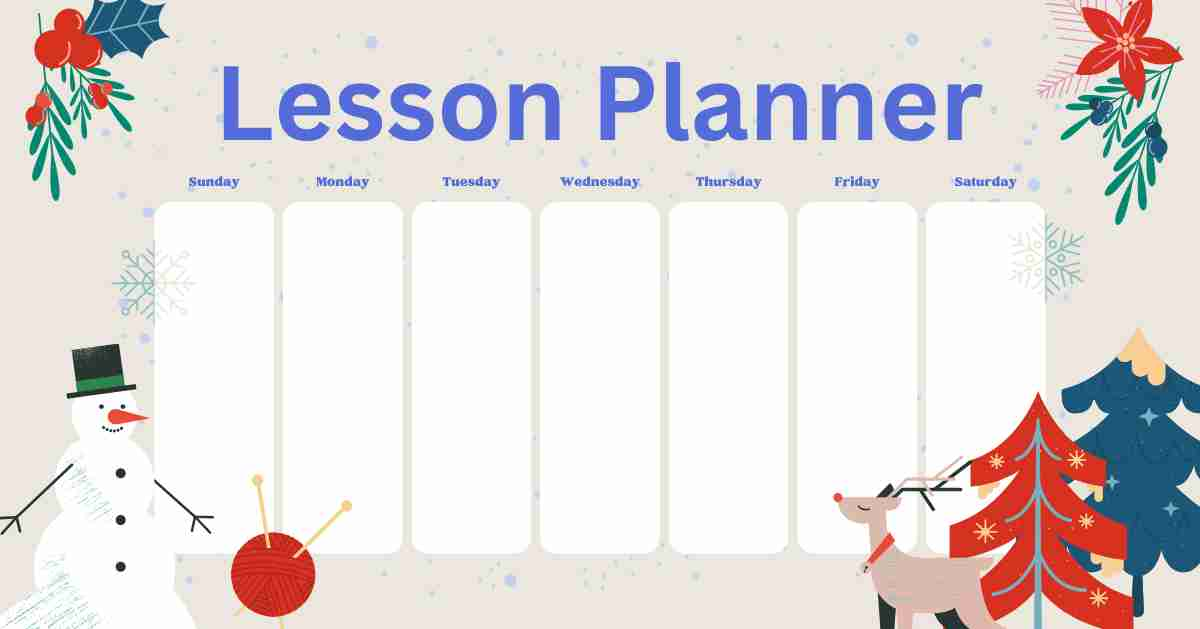5 Steps to Creating a Lesson Plan That Works for Every Learner

Crafting a lesson plan that meets the needs of every learner might seem like a tall order, but it doesn’t have to be. Whether you’re an experienced educator or just starting, having a well-structured approach makes all the difference. So, how do you create a plan that keeps everyone engaged, from the high achievers to those who need a little extra support? In this blog post, we will break it down into five actionable steps to give you a helping hand.
1. Start with Technology – Simplify Your Planning
If you’re not already using a lesson planning tool, such as an AI Lesson Plan Generator, you’re missing out on a massive time-saver. These tools can help you outline objectives, structure activities, and align lessons with curriculum standards in minutes. Instead of starting from scratch, you can tweak a ready-made framework to suit your classroom’s needs. The result? You spend less time buried in prep work and more time focusing on your students. The key is not to rely on these tools entirely but to use them as a foundation. Add your personal touch to ensure the content resonates with your teaching style and the learners you know best.
2. Know Your Students – Cater to Different Learning Styles
Every classroom is a mix of unique personalities, skills, and learning preferences. Some students thrive with visual aids, while others need hands-on activities to grasp concepts. Start by assessing the different types of learners in your group. Are they primarily visual, auditory, or kinesthetic learners? Do some students need extra challenges, while others benefit from simpler explanations?
Once you’ve got a clear picture, adapt your lesson plan to cover all bases. For instance:
- Visual learners – Incorporate diagrams, slides, and colorful charts.
- Auditory learners – Include discussions, storytelling, and verbal instructions.
- Kinesthetic learners – Plan experiments, role-playing activities, or physical tasks.
This doesn’t mean every single activity must cater to all styles, but mixing them up ensures everyone gets something tailored to their needs.
3. Define Clear Objectives – Focus on What Matters Most
Before diving into the details, ask yourself: What do I want my students to learn by the end of this lesson? Having clear objectives keeps you and your students focused. Be specific—avoid vague goals like “understand the topic.” Instead, think about measurable outcomes. For example, “Students will be able to identify and label the parts of a plant” is much clearer.
When writing your objectives, keep Bloom’s Taxonomy in mind. Aim for a mix of lower-order skills like remembering and understanding, as well as higher-order skills like analyzing and creating. This approach helps you challenge advanced learners without leaving others behind.
[Read About:NEET and JEE Preparation with AI Technology]
4. Break It Down – Structure Makes All the Difference
A well-structured lesson flows naturally, guiding your students from one activity to the next without confusion. Here’s a simple framework to keep things organized:
- Introduction – Set the stage by briefly introducing the topic. Use a question or fun fact to grab their attention.
- Core Lesson – Teach the main content using a mix of methods (e.g., lecture, video, group work). Keep it interactive!
- Practice – Provide activities or exercises to reinforce what they’ve learned. This could include worksheets, group discussions, or hands-on projects.
- Wrap-Up – End with a summary or quick review to solidify the day’s key points. Encourage questions to clear up any confusion.
Don’t be afraid to adjust the timing of each section as needed. Some topics may require more practice, while others might need a longer introduction. Flexibility is your best friend here.
5. Assess and Reflect – Learning Is a Two-Way Street
How do you know if your lesson plan worked? Assessment doesn’t always have to mean formal tests or quizzes. It could be as simple as observing students during activities, asking reflective questions, or reviewing their work. Whatever method you choose, it’s important to gather insights into what clicked and what didn’t.
After the lesson, take a moment to reflect. Did students stay engaged? Were the objectives met? Were any parts of the lesson too challenging or too easy? Use these insights to tweak future plans. The best educators are constantly fine-tuning their approach to meet their students’ needs more effectively.
Conclusion
Creating a lesson plan that works for every learner doesn’t have to feel overwhelming. By using tools to save time, focusing on your students’ unique needs, and building a flexible structure, you’re setting yourself and your classroom up for success. With these five steps, you’re not just delivering lessons—you’re making learning an experience everyone can enjoy. Ready to give it a try?
